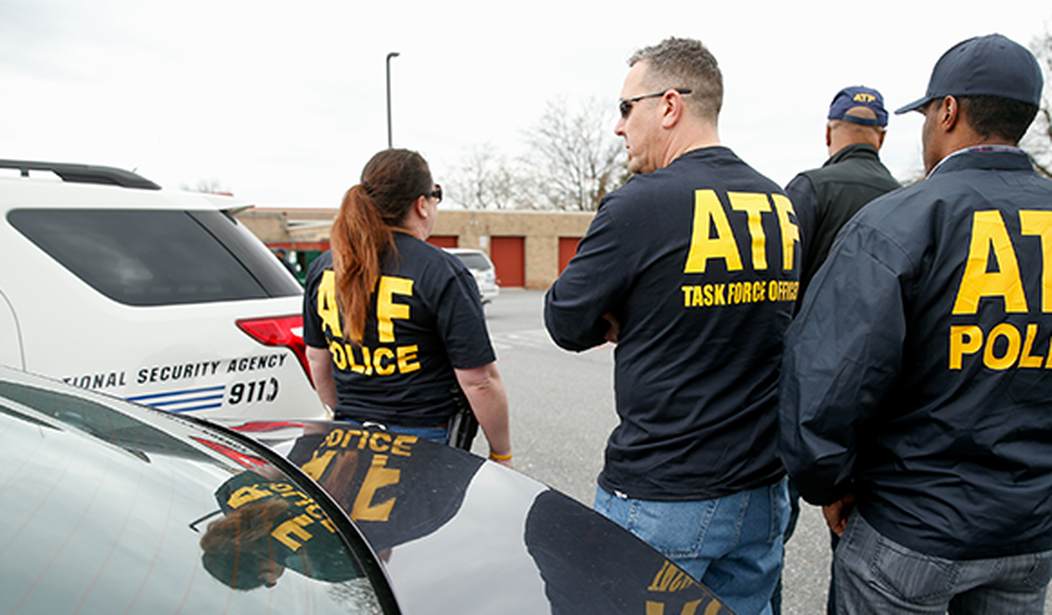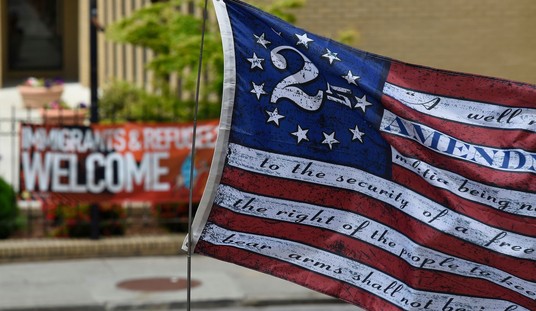[Editor’s note – Ryan Petty joined me on today’s Bearing Arms Cam & Co to talk more about the ideas in his column. You can check out our entire conversation in the video window below. – Cam]
In Federalist Paper No. 51, James Madison wrote, “If men were angels, no government would be necessary. If angels were to govern men, neither external nor internal controls on government would be necessary. In framing a government which is to be administered by men over men, the great difficulty lies in this: you must first enable the government to control the governed; and in the next place oblige it to control itself.”
Madison emphasizes the need for a government structure that balances power and protects against tyranny, reflecting the Founders’ intent to create a system that limits government in order to safeguard the rights and freedoms of the people. Everything the Founders put in place points to this. Yet we have strayed from these ideals. Most egregiously, Congress has abdicated its role as the legislative body in the federal government, leaving that task to unelected bureaucrats in the Executive Branch like those in the Federal Bureau of Alcohol, Tobacco, Firearms, and Explosives (ATF).
For decades, the ATF has been perceived by many Second Amendment advocates as an agency dedicated to infringing on the rights of Americans as recognized in the Second Amendment. Today’s ATF appears even more intent on restricting the Constitutional rights of Americans, interfering with the lawful commerce conducted by Federal Firearms Licensees, and generating one scandal after another.
More recently, and the subject of several federal lawsuits, the ATF has been doing the bidding of gun control activists without regard for administrative procedures or Constitutionally defined separation of powers. The ATF’s actions have fueled a growing call for the abolishment of the agency. Many Americans are appalled by executive overreach, which has been unprecedented during the Biden administration, because federal agencies have been weaponized against political opponents of the president.
Calls for the reform or abolishment of the ATF grow louder and louder. Just last week, an article published by the Second Amendment Foundation makes the case for undoing the damage done by the Biden Administration. It’s a roadmap for the next president, but not one that will alter the current course of the ATF or stop future abuses. And while I’m on board with undoing Biden’s dirty work, I don’t think it’s enough. It’s my view that undoing the years of Biden Administration overreach and utter disdain for the Constitutional rights of American citizens will not be enough. The ATF, as it is currently defined, has got to go.
If we are to curtail ATF abuses, the current state of affairs must radically change. To borrow a phrase from Biden’s puppet master Barack Obama, we can’t simply reform the ATF we must “fundamentally transform” the ATF. Simple reform of the ATF is akin to taking a daily baby aspirin in hopes of preventing a second heart attack, a good practice to be sure, but is it enough? Transformation would be like a heart transplant. But if it is possible to transform the ATF, what would that transformation look like?
Well, imagine a world where the ATF viewed its primary mission as one of protecting, not infringing, the Second Amendment rights of Americans. Let that sink in for just a moment. Continuing on, imagine an agency that promotes the lawful purchase, possession, and bearing of firearms by responsible citizens. Imagine an agency that viewed its mission to accelerate the lawful sale and transfer of firearms and firearms accessories. In short, imagine an agency that viewed itself not so much as a rule maker and enforcement agency, but one that protects and facilitates the exercise of the right to keep and bear arms. Hard to imagine, I know. It wasn’t easy writing all of that.
If you’re not yet convinced the ATF must be transformed or abolished, imagine a federal agency with the power of the ATF tasked with regulating the exercise of free speech or religion. We live in post-pandemic America, and the mere thought of such an agency should be innately revolting. But the thought exercise begs the question, why do we allow a federal agency to regulate our Second Amendment rights?
Let’s leave our heads in the clouds for just a few more minutes, exploring how such a transformation could be realized. Focusing on reshaping the ATF into an agency that not only respects but also champions the freedoms guaranteed by the Second Amendment. A change that can only be seen as crucial for maintaining the constitutional balance between regulating firearms and protecting the rights of law-abiding gun owners. Transformation is a multi-part plan.
Restructuring the ATF’s Leadership and Mission
It is said that culture trumps everything, and I’ve seen this in my work as a management consultant in the private sector. Without exception in the projects I have been involved with, if we were unsuccessful in changing the corporate culture, the project failed. How do you change culture? Well, there are entire books written on this subject, but let me summarize. You almost always have to change the people. Some would argue you always have to change the people because as one astute LinkedIn user noted, “culture is the organization’s immune system”. Culture is simultaneously the single most important driver for change and the single biggest impediment to change. Culture must be considered as part of any restructuring plan. In the corporate sector change is often an existential exercise, one that drives the required organizational changes or the company fails. There is no such threat for the ATF, but we’ll come back to this.
In the case of the ATF, any serious transformation will require a restructuring of its mission and leadership- driving deep into the sclerotic bureaucracy. Starting with replacing current leadership. It goes without saying that ATF Director Steven Dettlebach must be removed, but many of the agency’s top leaders must also be removed. New ATF leadership should be comprised of individuals with a proven commitment to upholding constitutional rights related to firearm ownership and possess a deep understanding of the unintended consequences of regulation of those rights. Emphasis should be on leaders who view the agency’s role as limited to protecting the rights of law-abiding gun owners. They should view the purpose of regulation as one of explicitly limiting government authority–not one of controlling their fellow Americans. Anyone who does not jump on board with the reformed mission should be fired. In management consulting, we call these laggards, corporate antibodies, but unlike their human equivalents, they are toxic to change. There is simply too much at stake to allow a few holdouts to sabotage the transformation.
Redefining the mission of the ATF, and this is critical, involves re-writing the agency’s core objectives to explicitly prioritize the protection and preservation of Second Amendment rights. Hand in glove with the change of mission, new leaders should be firearms enthusiasts deeply committed to upholding the constitutional rights of gun owners. These leaders must embody a philosophy that respects lawful gun ownership as a fundamental American value, guiding the ATF towards policies and actions that support and defend this perspective. This reorientation is crucial for the agency to regain the trust and support of the gun-owning community.
Legislative and Policy Reforms
To transform the ATF into an agency aligned with Second Amendment advocacy, significant legislative and policy reforms are essential. These reforms must focus on creating an agency that respects and protects the rights of gun owners, prioritizing education and compliance over punitive measures. Congress must reaffirm its proper role as found in Article I of the Constitution, and it must act to executive overreach next to impossible. Congress must step up and fulfill its Constitutional role as the legislative body and refuse to acquiesce to the Executive Branch nor allow it to create law. That will require strengthening the Administrative Procedures Act (APA), more on that later.
But it isn’t just that Congress should have more oversight of the ATF, the ATF needs to shift its own legislative focus to one of promoting the Second Amendment and lawful gun use by Americans. With new leadership shifting the legislative focus, the ATF can foster a cooperative and supportive relationship with gun owners and enthusiasts, ensuring regulations are fair, clear, and respectful of constitutional rights. This approach would involve revising existing laws and introducing new policies that reflect an understanding of and respect for the importance of gun ownership in American culture and heritage. The ATF’s law enforcement duties should be eliminated and shifted to another federal agency. The goal of these reforms should be to promote a more balanced and constitutionally grounded approach to firearms regulation, one that acknowledges the right of citizens to keep and bear arms is not automatically a threat to public safety, but a rogue agency that infringes on those rights is.
Increased Transparency and Accountability
Increasing transparency and accountability within the ATF is essential for building trust with the Second Amendment community. This would involve open communication about the agency’s operations, decision-making processes, and policy changes. Such transparency allows for public scrutiny and ensures that the ATF’s actions are in line with constitutional rights. Additionally, implementing accountability measures, such as regular audits and public reporting, would allow for oversight and ensure the agency is held responsible for its actions. This approach would foster a more collaborative relationship between the ATF and gun owners, aligning the agency’s operations with the interests and rights of the public it serves.
The ATF has often abused the rules around the creation of regulations as defined in the Administrative Procedures Act of 1946. The APA is a federal statute that governs the process by which federal agencies develop and issue regulations. It ensures that agency procedures are fair and transparent. The APA includes requirements for public notice of proposed regulations, opportunities for public comment, and provisions for how agencies should handle hearings, adjudication, and rule-making. The ATF has violated the APA, without consequence, on multiple occasions. Congress should look to update the APA, with the goals of improving the rule-making process, holding agencies accountable for following the rules, and reforming the adjudication process. Another improvement would be to push any enforcement of regulations dealing with Constitutionally protected rights to the Judiciary for adjudication. Enhanced Congressional oversight would play a key role in holding unelected bureaucrats accountable to the people.
The Ultimate Goal of Reform: Balancing Regulation and Rights
Balancing regulation and rights within the ATF involves a more nuanced approach to firearms regulation, ensuring that the constitutional rights of law-abiding gun owners are respected in any attempt to address public safety concerns. If rights cannot be preserved, then the ATF should have no power to regulate, even if proponents of regulation make a public safety argument. This balance requires clear, fair, and consistently applied regulations that focus on preventing illegal activities without unduly burdening legal gun ownership. It’s about crafting policies that target criminal misuse of firearms rather than imposing restrictive measures on responsible gun owners. Moreover, promoting responsible gun ownership through education and outreach is essential, helping to create a culture of safety and responsibility around firearms. This approach reinforces the idea that the right to bear arms comes with a commitment to responsible usage, aligning ATF’s regulatory role with respect for Second Amendment freedoms.
To make these reforms successful, the enforcement responsibilities that ATF currently has must be moved to another federal law enforcement agency. Recent moves by the Biden Administration to arm IRS enforcement agents, for example, only serve to diminish trust. If we are to re-establish trust, we need fewer federal agencies with armed law enforcement powers, especially those agencies that are charged with “regulating” Constitutionally enumerated rights.
Coming back down to earth for a moment, transforming the ATF is tough not just because changing organization culture is really hard, but because we are a politically polarized nation. That polarization is reflected in that we decreasingly share common values, perceive the same reality and want the same outcomes. It is also reflected in our choices for Congressional representatives. Without a clear majority in Congress willing to reform the ATF and a president willing to take on the challenge, it’s unlikely any transformative effort would succeed. The work of transformation is hard enough with a willing client and a commitment to change. It’s nearly impossible in a politically divided environment, with a client that, regardless of leadership, sees no need for reform.
Abolishing the ATF and Restructuring Under Another Agency
The Founding Fathers of the United States often spoke about the role of government, particularly its duty to protect natural rights. Thomas Jefferson, in the Declaration of Independence, stated: “That to secure these rights, Governments are instituted among Men, deriving their just powers from the consent of the governed.” In Federalist Paper No. 51, James Madison wrote, “If men were angels, no government would be necessary. If angels were to govern men, neither external nor internal controls on government would be necessary. In framing a government which is to be administered by men over men, the great difficulty lies in this: you must first enable the government to control the governed; and in the next place oblige it to control itself.”
Madison emphasizes the need for a government structure that balances power and protects against tyranny, reflecting the Founders’ intent to create a system that safeguards the rights and freedoms of the people. Everything the Founders put in place reflects their desire and belief that the primary role of government is to safeguard the natural rights of its citizens. We have strayed from these ideals. Congress has abdicated its role as the legislative body in the federal government, leaving that task to unelected bureaucrats in the Executive Branch.
the size of the staff to which it may be assigned”. He went on to say,
Politicians and taxpayers have assumed (with occasional phases of doubt) that a rising total in the number of civil servants must reflect a growing volume of work to be done. Cynics, in questioning this belief, have imagined that the multiplication of officials must have left some of them idle or all of them able to work for shorter hours. But this is a matter in which faith and doubt seem equally misplaced. The fact is that the number of the officials and the quantity of the work to be done are not related to each other at all. The rise in the total of those employed is governed by Parkinson’s Law, and would be much the same whether the volume of the work were to increase, diminish or even disappear.








Join the conversation as a VIP Member